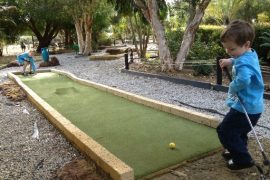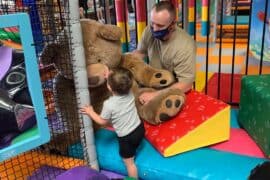Step Into the Beat: A Parent’s Guide to Finding Dance Classes Nearby
Hello there, dance-loving families! ? Are you on the hunt for the perfect dance class near you for your little movers and shakers? Look no further! In this jolly guide, we’ll twirl through everything you need to know to find local dance classes that will have your kids leaping with excitement. Whether you’re envisioning your child pirouetting in a ballet class or breaking a move in a hip-hop studio, we’ve got the steps to get you there. Ready, set, let’s dance!
Why Dance? The Incredible Benefits for Kids
Before we shuffle into the nitty-gritty, let’s quickstep over why dance classes are a fantastic choice for your youngsters:
- Boosts Physical Health: Dance is a great form of exercise, improving cardiovascular health, flexibility, balance, and strength.
- Enhances Emotional Development: Dancing can help kids express their emotions and gain confidence both on and off the stage.
- Encourages Social Skills: Group classes foster teamwork and friendship, teaching children about cooperation and social interaction.
- Develops Discipline and Focus: Learning dance routines requires concentration and practice, skills that benefit all areas of life.
- Cultivates Creativity: Dance is an art form that sparks imagination and creativity, allowing kids to create movement that is uniquely their own.
Step 1: Identifying Your Child’s Dance Interests
Before you Google ‘dance class near by me,’ it’s important to have a heart-to-heart with your child. Find out what dance styles pique their interest. Do they love the grace of ballet, the rhythm of tap, or maybe the energy of hip-hop? Understanding their preferences will help you narrow down the search to the most suitable classes.
Popular Dance Genres for Children:
- Ballet
- Jazz
- Hip-Hop
- Contemporary
- Tap
- Ballroom
- Folk or Cultural Dance
Step 2: Researching Local Dance Studios
Once you have an idea of your child’s dance interests, it’s time to find a dance studio that fits the bill. Here are a few tips to make your search for the perfect local dance class a breeze:
- Online Search: Start with a simple online search for “dance class near me” or “children’s dance classes near me.” This will bring up a list of nearby studios with a variety of offerings.
- Read Reviews: Reviews from other parents can offer invaluable insight into a studio’s environment and teaching styles.
- Check Out Social Media: Studios often post class videos and photos, giving you a glimpse into the classes they offer and the community vibe.
- Take Note of Location and Schedule: Proximity and convenient class times are key to maintaining a consistent dance routine for your child.
- Visit the Studios: If possible, visit a few top choices to see the facilities and meet the instructors. This can help you sense the atmosphere and imagine if your child would thrive there.
Exploring Dance Class Options
Dance schools offer various programs catering to different age groups, skill levels, and interests. From toddler classes that focus on movement and fun to pre-teen classes that start to hone technique, knowing the options available can help you make an educated decision.
- Recreational vs. Competitive: Decide whether your child is looking for a fun activity or is interested in the discipline of competitive dance.
- Class Size: Smaller class sizes may offer more individualized attention, while larger classes can provide a more social experience.
- Performance Opportunities: Some kids love the spotlight. Find out if there are recitals, competitions, or other performance opportunities.
- Faculty Qualifications: Ensure that the instructors are qualified and have experience working with children.
With these tips in hand, you’re ready to cha-cha-cha your way to the perfect dance class for your kiddo! Keep in mind the joy and growth that come from dance are priceless investments in your child’s future. Stay tuned for more insights on how to make the most of your child’s dance classes, including what to expect in the first class, how to prepare, and more. It’s time to lace up those dance shoes and get ready for a journey full of rhythm and smiles! Keep dancing, my friends, and watch your little stars shine bright on the dance floor! ??

5 Things Parents Should Know When Preparing for Dance Classes
As you gear up for an exciting adventure in the world of dance, here’s what you should know to prepare your child for their first dance class:
- Dress Code: Inquire about the dance studio’s dress code. Many classes have specific requirements for attire such as leotards, tights, and proper dance shoes. Comfort is key so your child can move easily and focus on learning.
- Nutrition and Hydration: Dancing is a physical activity that requires energy. Ensure your child has a light, nutritious snack before class and brings a water bottle to stay hydrated throughout their session.
- Arriving Prepared: Aim to arrive at the studio at least 10-15 minutes early. This gives your child time to settle in, use the restroom, and become comfortable in the new environment before class starts.
- Understanding Studio Etiquette: Teach your child fundamental etiquette such as listening to the instructor, waiting their turn, and respecting fellow dancers. A positive attitude and good manners go a long way in ensuring a fun and productive class experience.
- Managing Expectations: Help manage your child’s expectations by explaining that learning to dance is a process, and it’s okay to make mistakes. Encourage them to enjoy the journey and celebrate their progress, no matter how small.
With these preparations, your child will be all set to get the most out of their dance class experience!
What to Expect During the First Dance Class
The first dance class can be a mix of excitement and nerves, so here’s a little outline of what typically happens:
- Introduction: The teacher will introduce themselves and welcome the children, helping them feel at ease.
- Warm-up: The class usually starts with a warm-up to prepare the body for dance and prevent injuries.
- Basic Steps: Especially in beginner classes, instructors will focus on teaching basic steps and building a foundation for more complex moves.
- Group Interaction: Children will have a chance to interact with one another and learn to move in unison or take turns.
- Cool Down: At the end of the class, there might be a cool-down period to stretch and relax the muscles.
Remember, it’s all about having fun and learning new skills. So cheer your child on and enjoy watching them fall in love with the art of dance!
Ensuring Your Child’s Continued Growth in Dance
After finding the ideal dance class and preparing your child for the first day, here are ways to support their continued growth in dance:
- Stay Involved: Take an interest in what your child is learning. Your support will motivate them to keep dancing.
- Practice at Home: Encourage practice outside of class, but keep it fun! Playing music and dancing together can reinforce what they’ve learned.
- Attend Performances: If there are recitals or shows, make sure to be there. It will mean the world to your child.
- Encourage Friendships: Dance classes can lead to lasting friendships. Encourage your child to connect with their dance classmates outside of the studio.
- Provide Feedback Carefully: Offer constructive feedback and heap on the praise to build their confidence.
These steps will help ensure your child’s experience with dance is enriching and will pave the way for a potentially lifelong passion for movement and expression.
. For more information see here
Disclaimer
The articles available via our website provide general information only and we strongly urge readers to exercise caution and conduct their own thorough research and fact-checking. The information presented should not be taken as absolute truth, and, to the maximum extent permitted by law, we will not be held liable for any inaccuracies or errors in the content. It is essential for individuals to independently verify and validate the information before making any decisions or taking any actions based on the articles.




